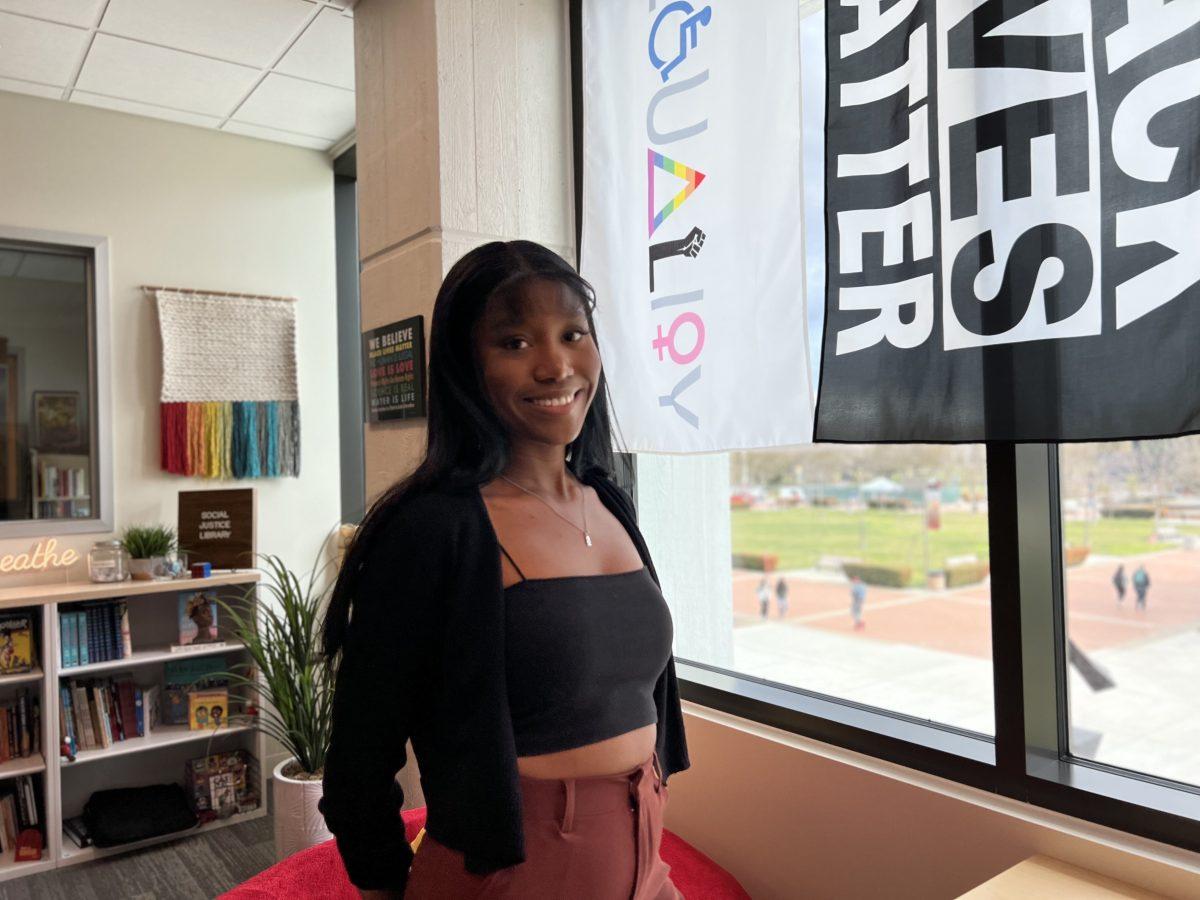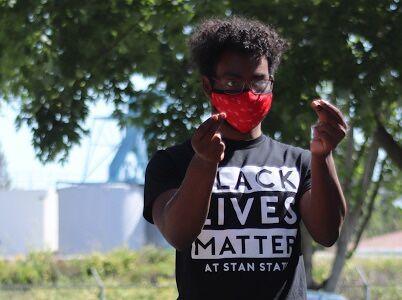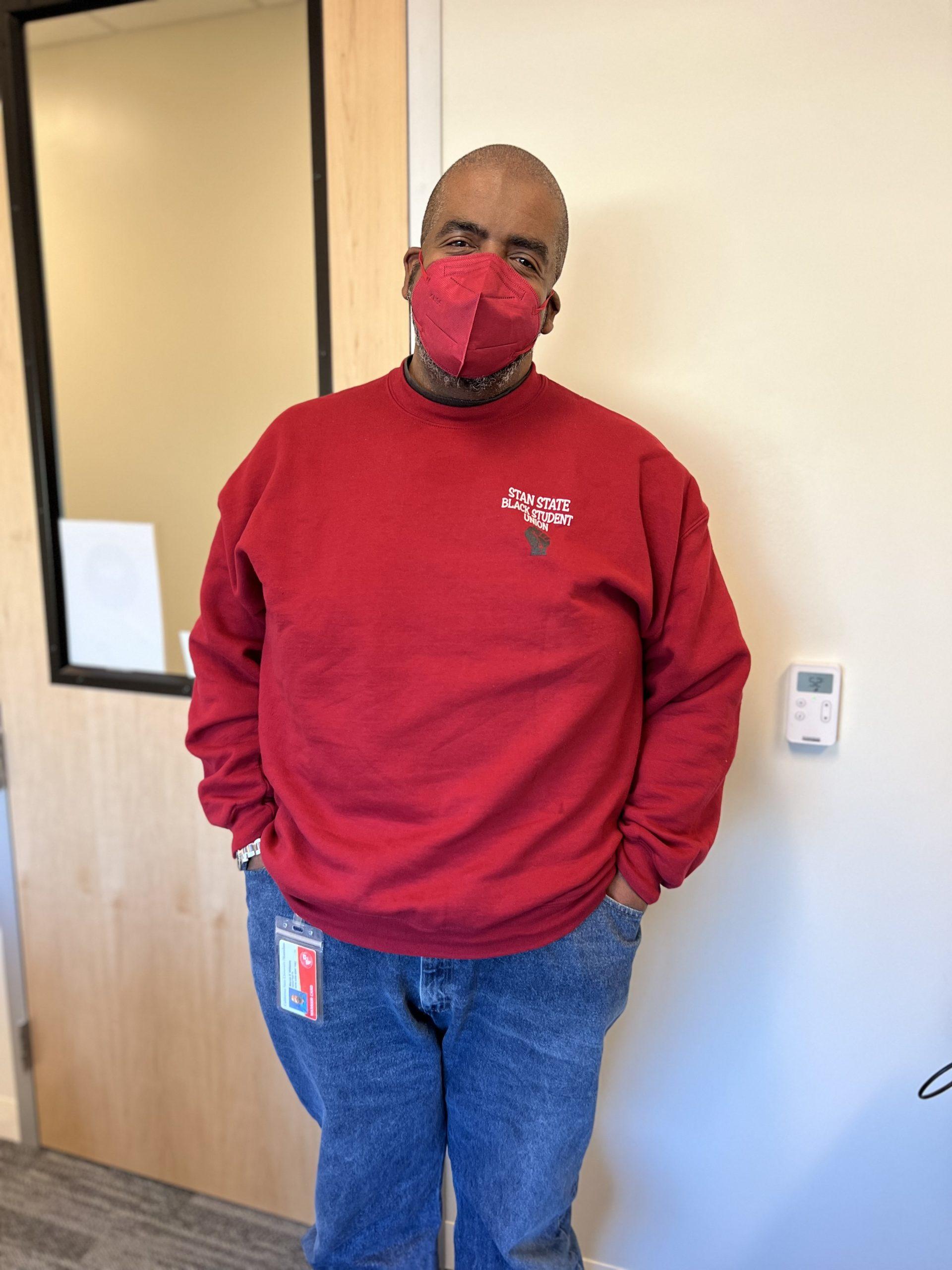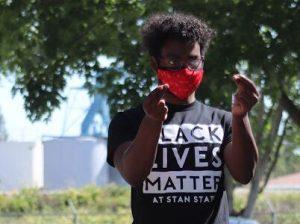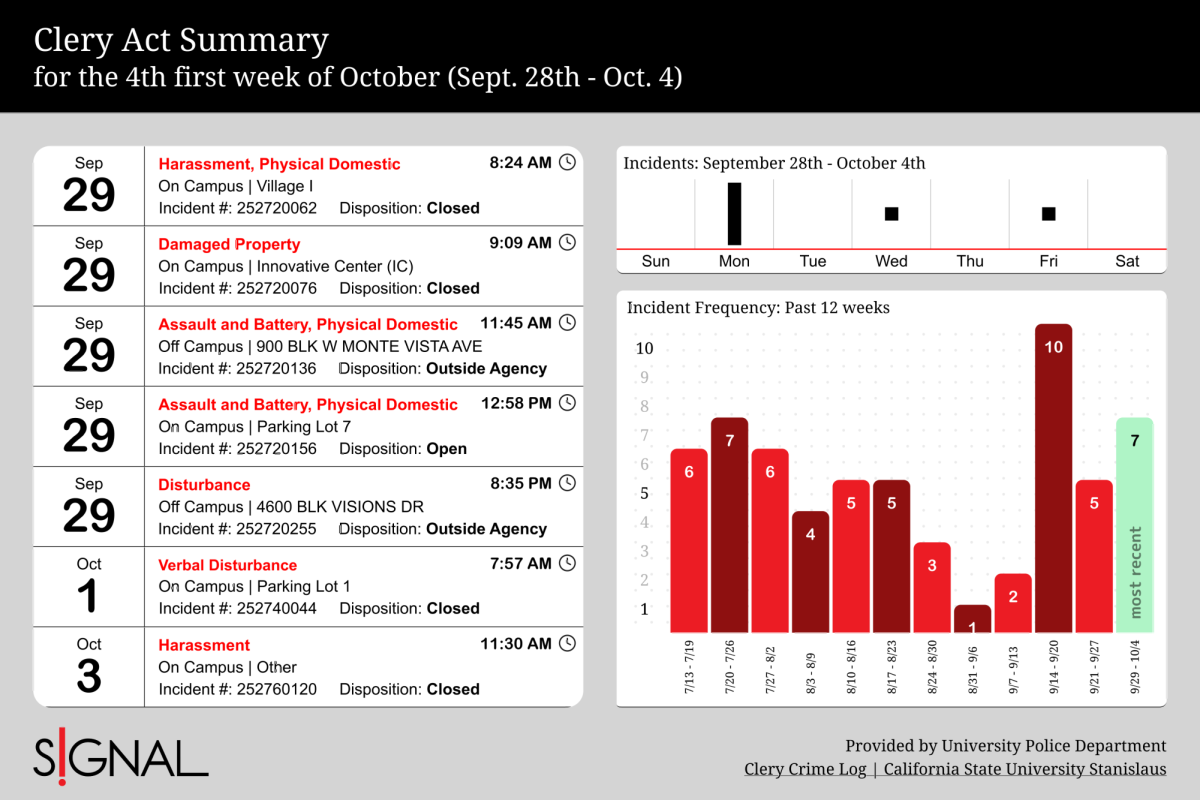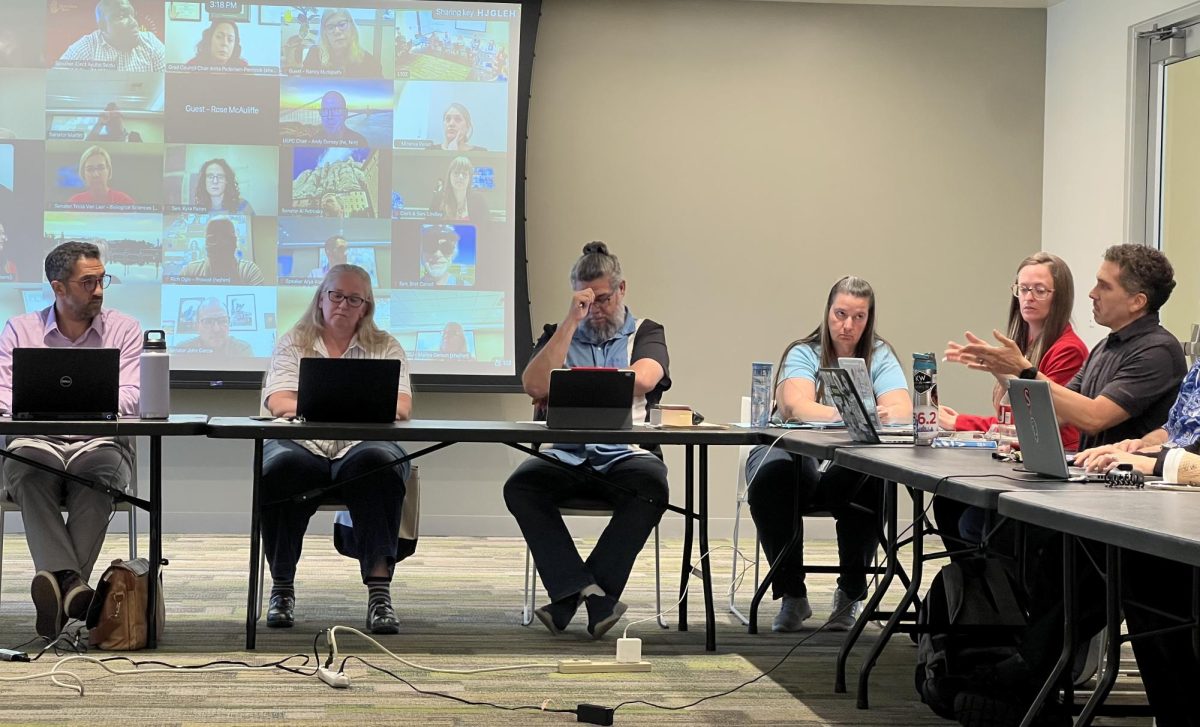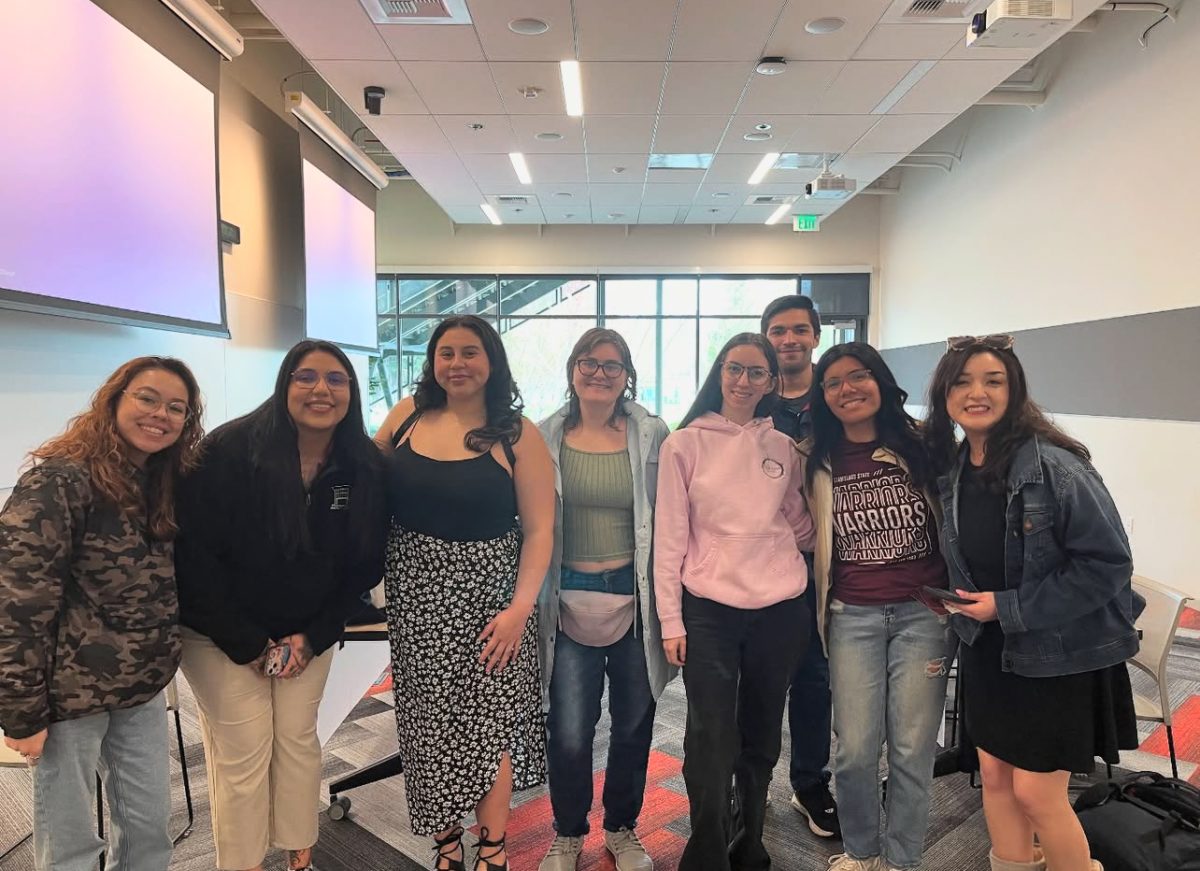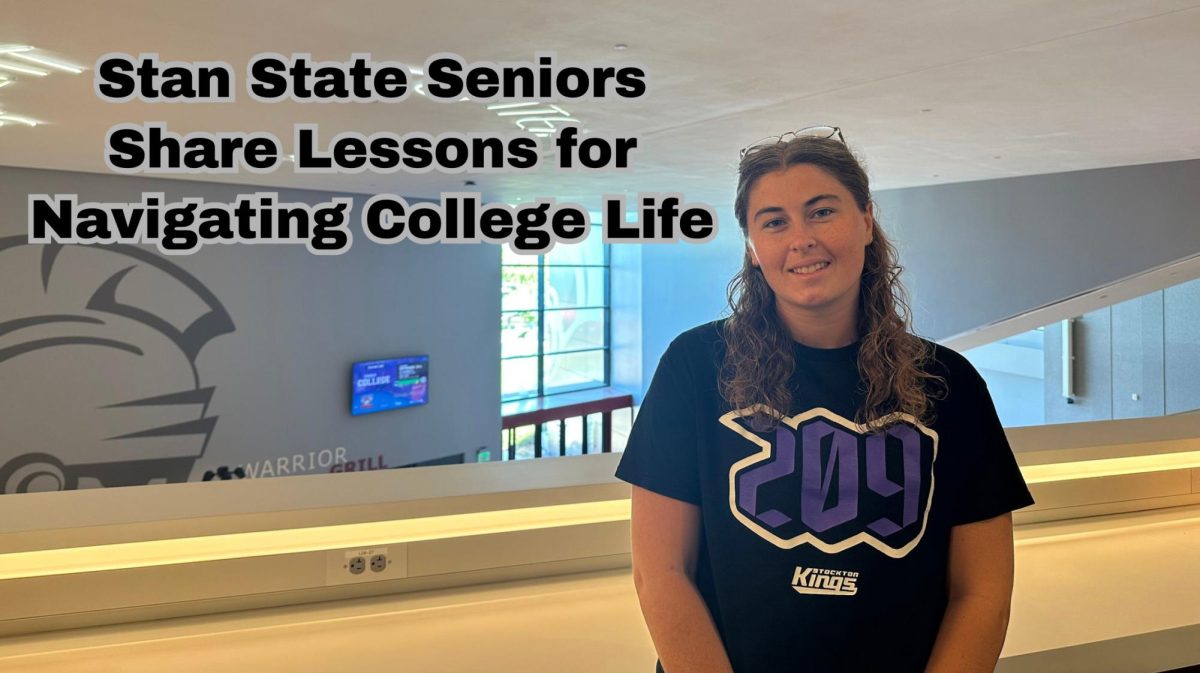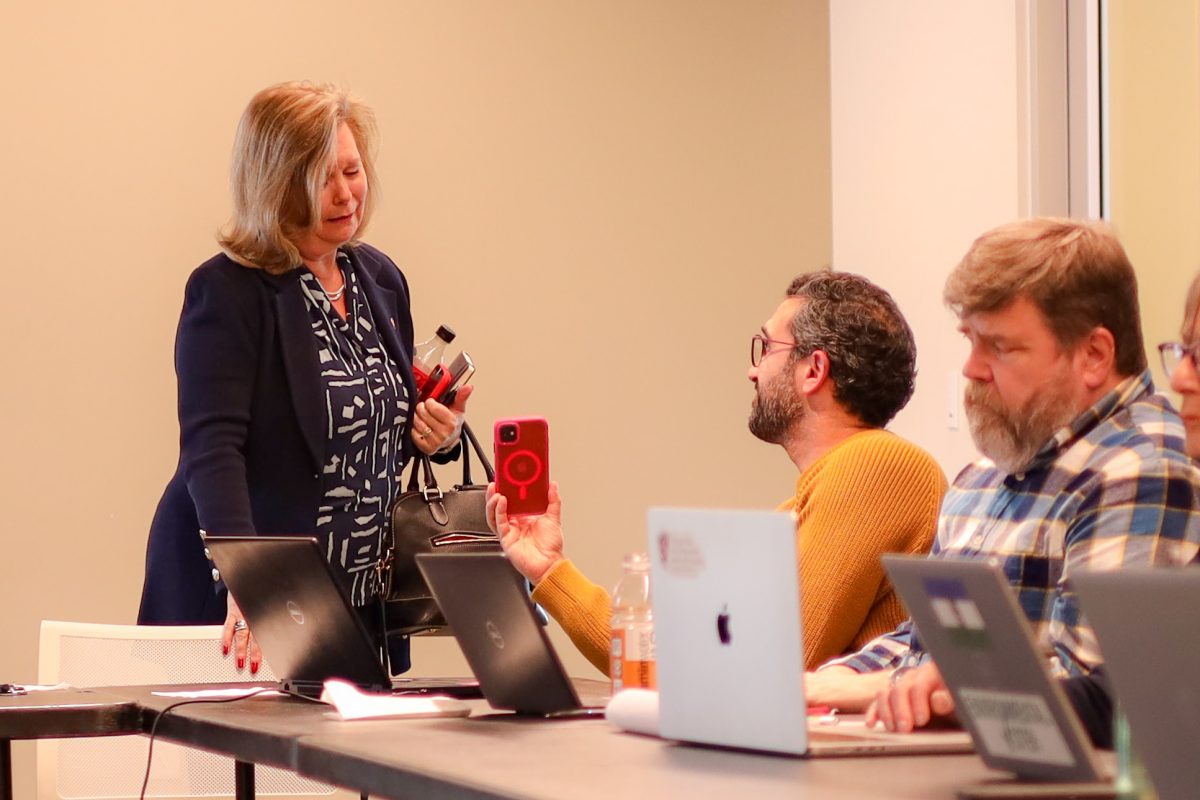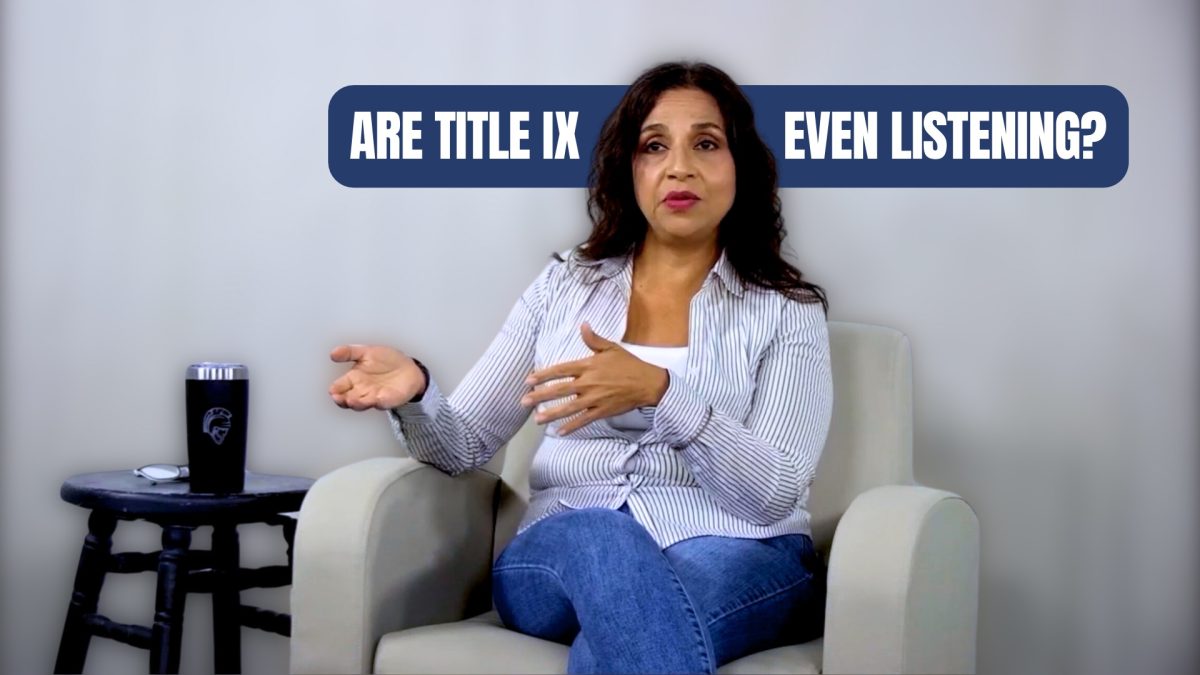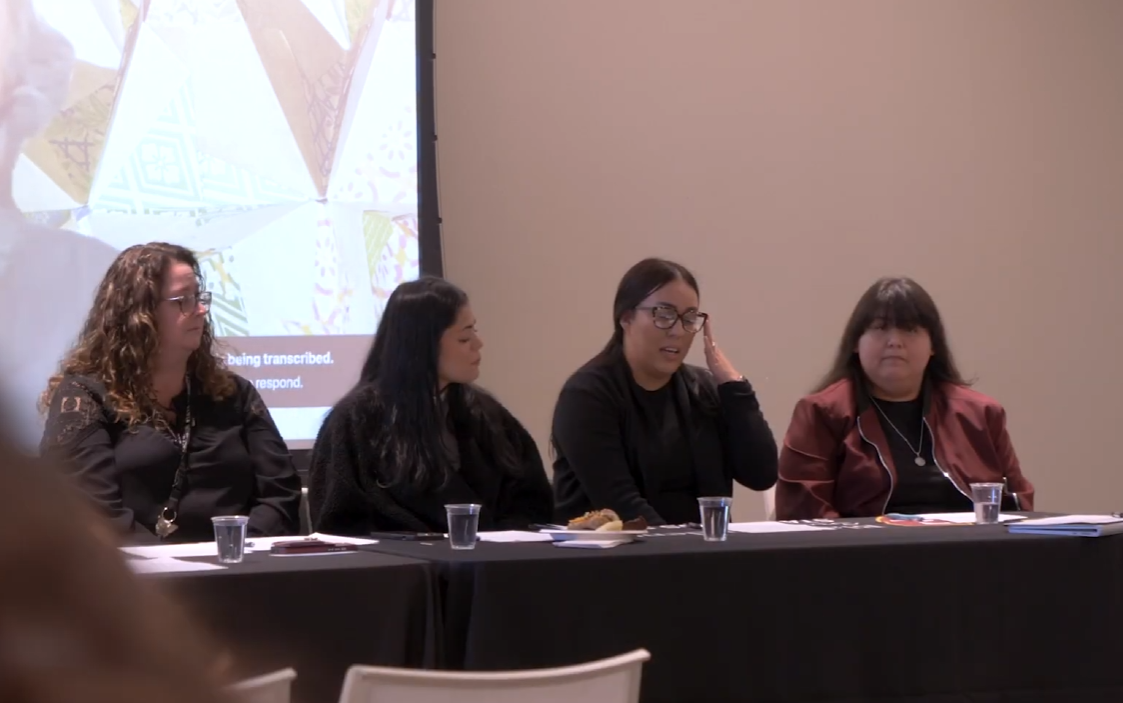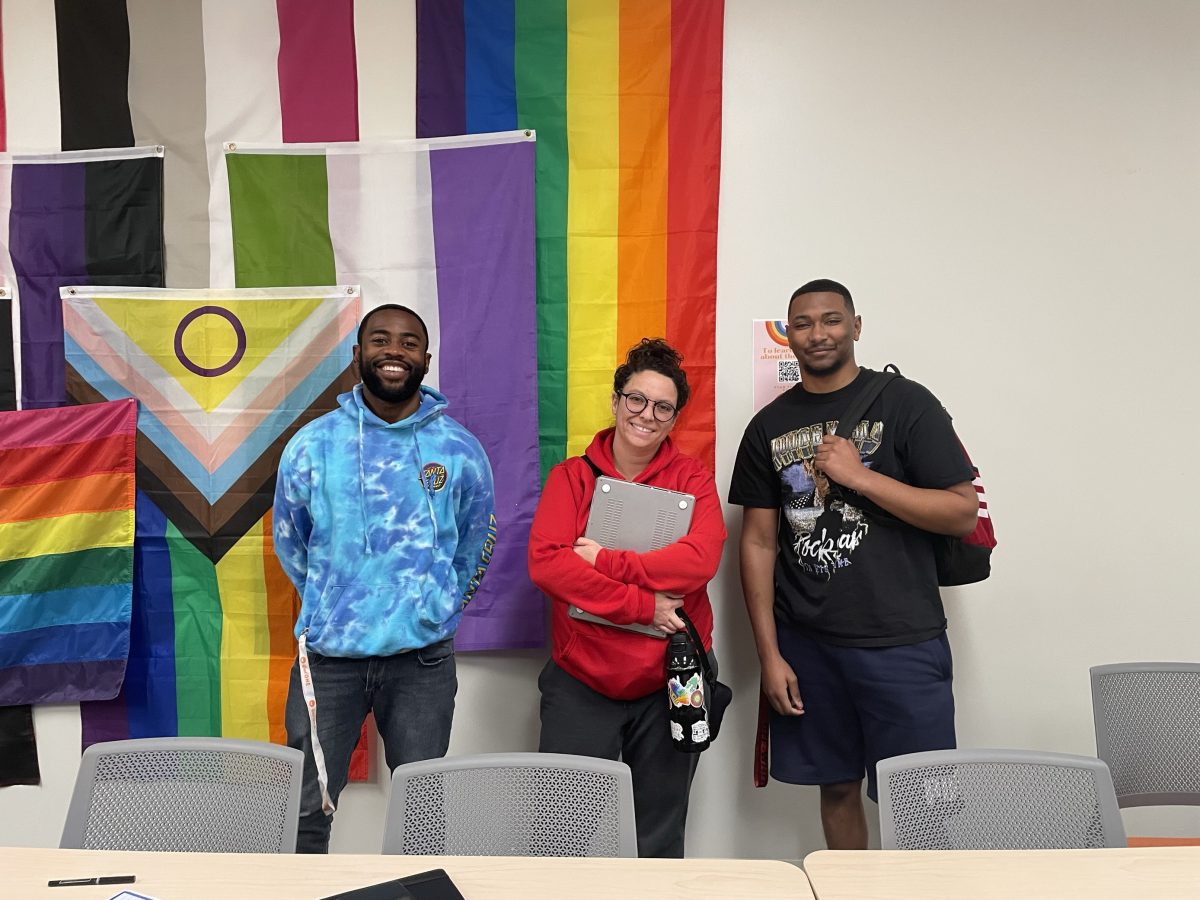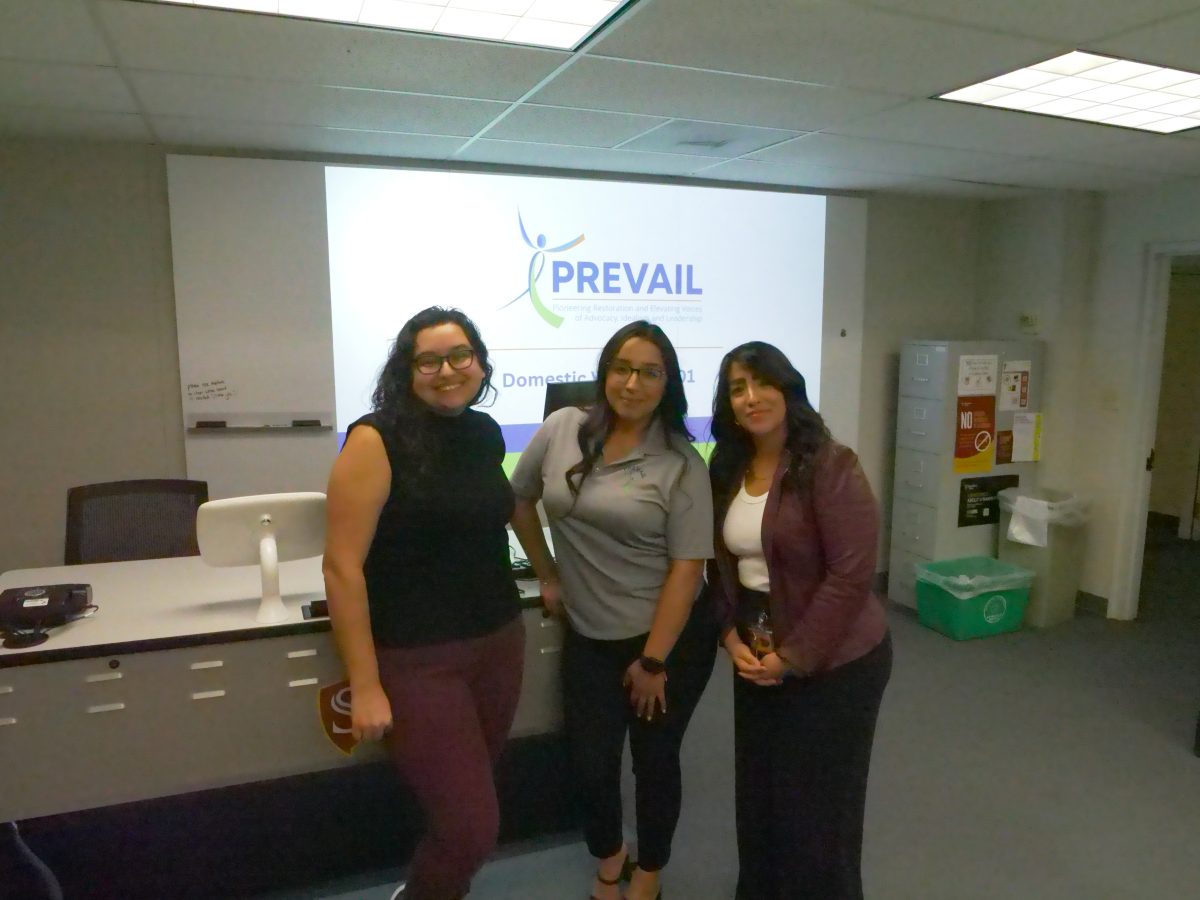As Black History Month comes to a close, Stanislaus State’s black student organizations have no plans of losing momentum. The campus is home to a multitude of organizations that embrace cultural diversity, and several are focused on the success and support of African American students. These organizations include Black Student Union (BSU), Male Success Initiative, and Sistas in Support (SIS) Mentorship Program. Each of these groups aims to foster a supportive and empowering environment for Stan State’s black students.
The significance of these organizations is perhaps more vital than ever during a time when students are just starting to ease out of the isolation of COVID-19 restrictions and into a nation that has, at least in some part, started to acknowledge years of inequality brought upon the black community.
BSU Co-President Sasha Thompson (junior, Communication Studies and Art History), who also works as a social media and content creator in the Warrior Cross Cultural Center, sees BSU and the other Black student organizations as networks to harness and cultivate support for the black community. She noted any recent lack of participation for the organizations no doubt stems from the past two years of remote learning, but also because there just aren’t that many Black students at Stan State. According to official campus demographics, black students made up less than 2 percent of enrolled students through the fall of 2019.
“[COVID] has been hard for a lot of us, but we do also have to acknowledge the fact that the school doesn’t have a high percentage of Black students on campus, so that does equate to the low turnout rate as far as student engagement,” Thompson said.
She added that students who have become accustomed to a Zoom routine also lack encouragement for participation, with many, if not most, logging in to Zoom and never turning their cameras on. She also believes the organizations would benefit from participation and support from everyone in the campus community.
“When a lot of people think of BSU, they think of just Black students on campus. Yes, BSU is an uplifting community for black students on campus, but I also believe it’s for anybody who’s an ally, who supports the movement, and wants to move forward socially,” Thompson explained.
Thompson is a member of several other organizations on campus and sees the opportunity for diversity and inclusivity in all of them. While that might look a little different in each case, depending on the group, she says she sees people of color in her own sorority who don’t want to promote the organization through taking photos or being a media presence because they simply don’t feel like they’re enough a part of the campus community.
“For me, personally, I know that if you’re not given the opportunity to feel a part of the community, you don’t want to participate, and that’s the same thing for the BSU,” she said. “If you feel that it’s only for Black people, you might not want to join.”
Thompson said she feels a responsibility to make sure BSU maintains a welcoming presence and let the campus community know, if you support the BSU, you are always welcome.
“We have one main objective, and it’s to reach social and political equity in the community,” she added.
BSU Co-President, Julian Johnson (senior, Psychology), is optimistic that the full return to campus this semester will help bolster support for all campus organizations, which haven’t had much of a chance to be as active as in years past.
“Being able to be out in the quad and actually see faces lets them know that we are here. Just being present is the thing that’s been difficult for us,” Johnson said.
Johnson hopes now that students are back on campus, it will bring an opportunity for in-person access to the campus community, which in turn can help the different groups promote one another.
“It’s one thing to promote ourselves, it’s another thing when we have ASI looking at us, when we have other orgs looking at us, and faculty and staff looking at us and talking about us. That really does help a long way and I think that’s what we need to get back to,” he said.
Like Thompson, Johnson sees the different ways campus organizations differ in the way they promote inclusivity. As a student athlete on the Stan State track & field team, Johnson has a perspective from a different angle, but equates it to the idea of using whatever program you’re a part of to make an impact.
“It’s about using our platform in a way that advances social and political equity and having that seat at the table to have a say in the things that go on in our communities and help our communities,” Johnson said. “We just need to be able to continue to be inclusive and diverse and continue to have those uncomfortable conversations that people tend to stray away from, because without them, we don’t progress. Without change, we stay the same.”
Marvin Williams, Director of Disability Resource Services (DRS) is the advisor for BSU. The group came to him a few years ago seeking a new advisor, and Williams didn’t hesitate to help out.
Like Thompson and Johnson, Williams said the BSU is an inclusive organization for anyone to be a part of.
“We are very inclusive, we embrace all. We’ve got folks who aren’t Black in the BSU, it’s like, ‘Come on, you’re part of the family too,’ And it would be nice if that were extended the other way without us having to lose or remove our blackness.”
Williams said he also sees the way COVID-19 affected participation in BSU, like any other organization, but added when it came to remote learning, Black students at Stan State might have actually adapted better in some ways.
“Nobody really likes meeting on Zoom, but it becomes an interesting situation here at Stan State because it can be a lot easier for Black students being at home and being around loved ones,” he said.
While Stan State’s Black student organizations have created a channel for students of color to feel empowered, Williams said they don’t always feel the support on campus outside of organizations like BSU. He also sees anti-black racism on the Stan State campus and said he wishes more would be done to address it.
“If you’re not Black, you don’t see it, because you’re not supposed to. It’s just business as usual,” he said. “I think it would be nice if the campus would at least have it on their radar, but there’s a difference too between having it on your radar and actually wanting to do something about it.”
Like Johnson, Williams believes change can only happen when hard, uncomfortable conversations take place, but said it is possible if we recognize there is a problem and we all work together.
“We need to be less like tigers, more like ants and understand that we can pull together, we can do for each other, and we can all win.”
Categories:
Black Student Orgs Look to Push for More Inclusive and Empowering Environments
Black Student Union Co-President, Sasha Thompson, inside the Warrior Cross Cultural Center at Stanislaus State. (Signal Photo/Kristin Platts)
0
Donate to Signal
Your donation will support the student journalists of California State University, Stanislaus. Your contribution will allow us to purchase equipment and cover our annual website hosting costs.
More to Discover

